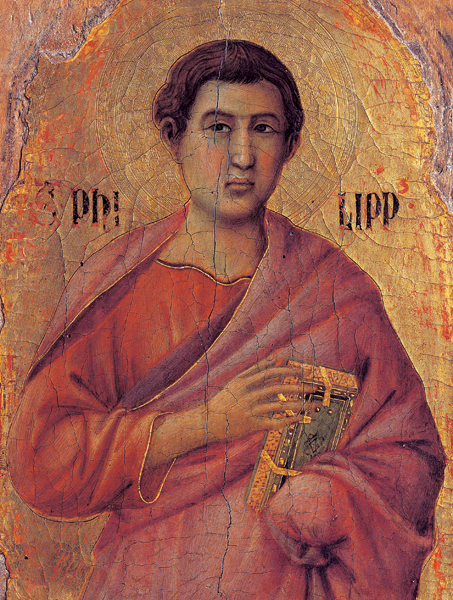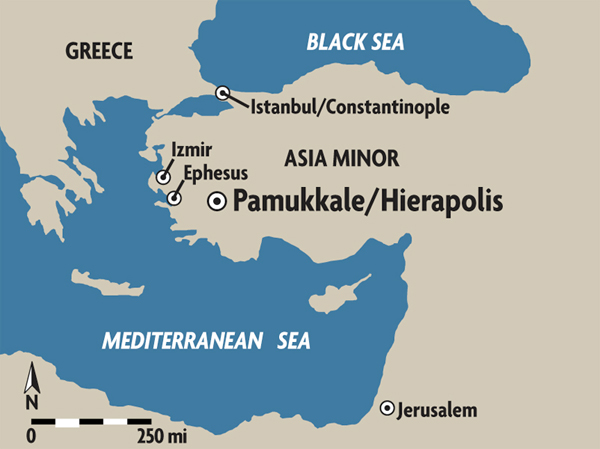Conversion, Crucifixion and Celebration
St. Philip’s Martyrium at Hierapolis draws thousands over the centuries

The apostle Philip was hung on a tree upside down with irons in his heels and ankles in Hierapolis in Asia Minor.
One of the 12 apostles, according to all four Gospels, Philip was born in Bethsaida on the northern shore of the Sea of Galilee (John 1:44, 12:21). His later career, after the Resurrection, is recounted in the apocryphal Acts of Philip.
Philip was dispatched with his sister Mariamne and Bartholomew, another apostle with whom he is often paired, to preach in Greece, Syria and Asia Minor. In Phrygia in western Asia Minor, the threesome came to Ophiorhyme; that is, “Serpent’s Town,” so-called because the inhabitants worshiped serpents and a viper called Echidna. Images of the viper and serpents filled the town, including the serpent temple with its statue of Echidna. The preaching of Philip and his colleagues, however, brought many of the townspeople to Jesus.

When Nicanora, wife of the pagan proconsul, fell ill with various diseases, especially to her eyes, she too became a Christian under Philip’s influence. On one occasion Philip spoke to her in Hebrew, and she cried out, “I am a Hebrew and a daughter of the Hebrews; speak to me in the language of my fathers. For, having heard the preaching of my fathers, I was straightway cured of the disease and the troubles that encompassed me.”
Already a library member? Log in here.
Institution user? Log in with your IP address.

